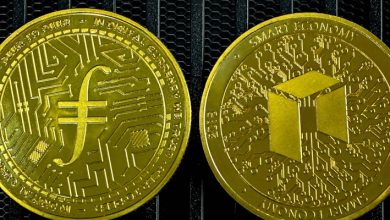Analyzing Token Distribution Models

- Understanding Token Distribution Models
- Key Factors in Analyzing Token Distribution Models
- Comparing Various Token Distribution Strategies
- The Impact of Token Distribution on Project Success
- Evaluating Fairness in Token Distribution Models
- Challenges and Opportunities in Token Distribution Analysis
Understanding Token Distribution Models
Understanding token distribution models is crucial for investors looking to participate in initial coin offerings (ICOs) or token sales. Token distribution models determine how tokens are allocated and distributed among various stakeholders, including founders, investors, advisors, and the community.
There are several common token distribution models used in the cryptocurrency space, each with its own advantages and disadvantages. Some of the most popular token distribution models include the fixed price model, Dutch auction model, and the dynamic pricing model.
In the fixed price model, tokens are sold at a predetermined price, usually set by the project team. This model is simple and straightforward, making it easy for investors to participate. However, it can lead to issues with price discovery and may not accurately reflect the true value of the token.
The Dutch auction model, on the other hand, starts with a high token price that gradually decreases over time until all tokens are sold. This model incentivizes early investors but can also lead to price volatility and uncertainty.
The dynamic pricing model adjusts the token price based on demand, allowing the market to determine the token’s value. This model can help prevent overvaluation or undervaluation of tokens but may also make it difficult for investors to predict the final token price.
Ultimately, the token distribution model chosen by a project can have a significant impact on its success. Investors should carefully evaluate the token distribution model of a project before deciding to participate in an ICO or token sale.
Key Factors in Analyzing Token Distribution Models
When analyzing token distribution models, there are several key factors to consider. These factors play a crucial role in determining the success and sustainability of a project. One important factor is the initial distribution of tokens. It is essential to assess how tokens are allocated initially and whether there is a fair distribution among stakeholders. Additionally, the vesting schedule of tokens is another critical factor to evaluate. A well-thought-out vesting schedule can help prevent token dumping and promote long-term commitment from investors.
Another factor to consider is the tokenomics of the project. This includes the total supply of tokens, inflation rate, and token utility. Understanding the tokenomics can provide insights into the potential value of the token and its long-term viability. Furthermore, the governance structure of the project is an essential factor to analyze. A transparent and decentralized governance model can help ensure that decisions are made in the best interest of the community.
It is also important to assess the token distribution timeline. A clear roadmap for token distribution can help build trust and credibility with investors. Additionally, the team behind the project plays a significant role in the success of the token distribution model. Evaluating the experience and credibility of the team members can provide valuable insights into the project’s potential for success.
Comparing Various Token Distribution Strategies
One of the key aspects to consider when analyzing token distribution models is comparing various strategies that are commonly used in the industry. Different projects may opt for different distribution methods based on their specific goals and objectives. Some common token distribution strategies include **initial coin offerings (ICOs)**, **airdrops**, **bounties**, and **staking rewards**.
**Initial coin offerings (ICOs)** have been a popular method for distributing tokens to investors. This involves selling a portion of the total token supply to early backers in exchange for funding the project. However, ICOs have faced criticism for their lack of regulation and potential for scams.
**Airdrops** are another distribution strategy where tokens are distributed for free to existing token holders or to members of the community. This can help increase awareness and adoption of the project, but may not always result in active participation from recipients.
**Bounties** are rewards offered to individuals in exchange for completing specific tasks or activities that benefit the project. This can include tasks such as marketing, development, or community engagement. Bounties can help incentivize participation and contribution from the community.
**Staking rewards** involve users holding a certain amount of tokens in a wallet for a specified period of time in order to earn additional tokens as a reward. This can help incentivize long-term holding and participation in the project’s ecosystem.
Overall, each token distribution strategy has its own advantages and disadvantages, and projects should carefully consider which method aligns best with their goals and values. By comparing various distribution strategies, projects can determine the most effective way to distribute tokens and engage with their community.
The Impact of Token Distribution on Project Success
Token distribution plays a crucial role in determining the success of a project in the cryptocurrency space. The way tokens are distributed among stakeholders can have a significant impact on the project’s overall performance and adoption. A well-thought-out token distribution model can help create a healthy ecosystem where all participants are incentivized to contribute to the project’s growth.
One of the key factors that can influence the success of a project is the fairness of the token distribution. If a large portion of tokens is held by a small group of individuals or entities, it can lead to centralization and reduce the project’s decentralization. On the other hand, a more evenly distributed token supply can help promote a more democratic and inclusive ecosystem.
Another important aspect to consider is the transparency of the token distribution process. Projects that are open and transparent about how tokens are allocated and distributed are more likely to gain the trust of the community. This trust can lead to increased participation and support from users, investors, and other stakeholders.
Furthermore, the token distribution model should align with the project’s goals and objectives. For example, if the project aims to create a decentralized platform for peer-to-peer transactions, the token distribution should reflect this vision by ensuring that tokens are distributed in a way that promotes decentralization and widespread adoption.
In conclusion, the impact of token distribution on project success cannot be overstated. By carefully designing a token distribution model that is fair, transparent, and aligned with the project’s goals, cryptocurrency projects can increase their chances of success and create a thriving ecosystem for all participants.
Evaluating Fairness in Token Distribution Models
When evaluating the fairness of token distribution models, it is essential to consider various factors that can impact the overall distribution process. One key aspect to analyze is the initial allocation of tokens and whether it is done in a transparent and equitable manner. Transparency in token distribution helps build trust among investors and ensures that no one party has an unfair advantage over others.
Another important factor to consider is the distribution mechanism itself. Some projects opt for a simple distribution model, such as airdrops or token sales, while others may use more complex mechanisms like staking or yield farming. It is crucial to assess whether the chosen distribution model is accessible to a wide range of participants and does not favor a select few.
Furthermore, the vesting schedule of tokens should be evaluated to determine if it aligns with the project’s long-term goals. A fair vesting schedule ensures that team members and early investors are incentivized to contribute to the project’s success over time, rather than dumping their tokens on the market immediately.
Overall, evaluating the fairness of token distribution models requires a comprehensive analysis of the initial allocation, distribution mechanism, and vesting schedule. By ensuring that these factors are transparent, accessible, and aligned with the project’s goals, token distribution can be conducted in a fair and equitable manner.
Challenges and Opportunities in Token Distribution Analysis
When it comes to analyzing token distribution models, there are various challenges and opportunities that need to be considered. One of the main challenges is ensuring a fair and equitable distribution of tokens to all participants. This can be difficult to achieve, as some distribution models may favor certain individuals or groups over others. However, by carefully examining the distribution process, it is possible to identify any potential biases and address them accordingly.
On the other hand, there are also opportunities that come with token distribution analysis. By studying how tokens are distributed, it is possible to gain valuable insights into the behavior of participants and the overall health of the ecosystem. This information can be used to make informed decisions about future token distributions and to improve the overall efficiency of the system.
Overall, token distribution analysis is a crucial aspect of any token project. By carefully examining the distribution process, it is possible to identify and address any potential issues, while also gaining valuable insights into the behavior of participants. This can help to ensure a fair and equitable distribution of tokens, while also improving the overall health and efficiency of the ecosystem.




